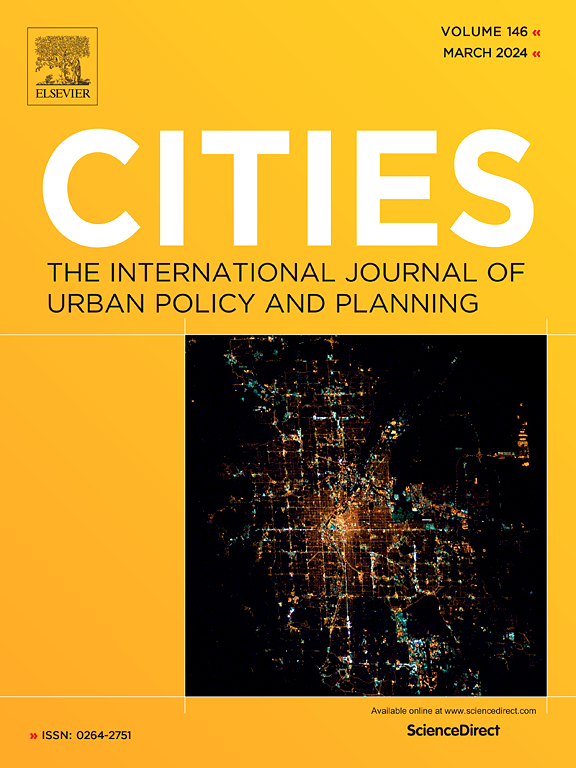How residential environments affect depressive mood and stress among young adults in South Korea: The role of restorativeness
IF 6.6
1区 经济学
Q1 URBAN STUDIES
引用次数: 0
Abstract
Young adults with mental health problem are increasing sharply. Most of them live in cities to work and study, and their everyday environment would have influenced their mental health. However, little is known about these impacts. Green areas are beneficial for mental health, but providing parks in developed cities is challenging. The question arises whether built environment can support mental health.
This study examined how residential environment, including housing and neighborhood environment, help alleviate depressive mood and stress. The survey involved 301 young adults aged 19–34 in Seoul as most Korean young adults move to study and work. Restorativeness was used as a mediating variable, measured by the Perceived Restorativeness Scale. Partial Least Squares Structural Equation Modeling was used.
Natural environments, including parks and greenery, significantly increase PRS and reduce stress. Results show that housing quality, diversity of commercial facilities, pleasant streetscapes, management, and social infrastructure enhance restorativeness, which in turn reduce stresses, though not alleviating depressive moods. The use of the Entropy Index to objectively measure commercial diversity strengthened the robustness of the analysis. This suggests that young adults' favorite characteristics for commercial facilities were reflected in restorativeness. Furthermore, spending time in a restorative neighborhood environment alleviates the stress and depressive mood of young adults. In contrast, the transportation environment had little impact, indicating the importance of their perception of the built environment. This study highlights the potential of residential environments to foster restorative settings.
居住环境如何影响韩国年轻人的抑郁情绪和压力:恢复性的作用
有心理健康问题的年轻人正在急剧增加。他们中的大多数人生活在城市工作和学习,他们的日常环境会影响他们的心理健康。然而,人们对这些影响知之甚少。绿地有益于心理健康,但在发达城市提供公园是一项挑战。问题来了,建筑环境是否能支持心理健康。本研究考察了居住环境,包括住房和邻里环境,如何帮助缓解抑郁情绪和压力。调查对象是首尔的301名年龄在19岁至34岁之间的年轻人,因为韩国年轻人大多为了学习和工作而搬家。恢复性被用作中介变量,由知觉恢复性量表测量。采用偏最小二乘结构方程建模。自然环境,包括公园和绿化,显著增加PRS和减少压力。结果表明,住房质量、商业设施的多样性、宜人的街景、管理和社会基础设施增强了恢复性,从而减少了压力,但不能缓解抑郁情绪。利用熵指数客观地衡量商业多样性,增强了分析的稳健性。这表明年轻人对商业设施的喜爱特征反映在恢复性上。此外,在恢复性社区环境中度过时间可以减轻年轻人的压力和抑郁情绪。相比之下,交通环境的影响很小,这表明他们对建筑环境的感知很重要。这项研究强调了住宅环境培养恢复性环境的潜力。
本文章由计算机程序翻译,如有差异,请以英文原文为准。
求助全文
约1分钟内获得全文
求助全文
来源期刊

Cities
URBAN STUDIES-
CiteScore
11.20
自引率
9.00%
发文量
517
期刊介绍:
Cities offers a comprehensive range of articles on all aspects of urban policy. It provides an international and interdisciplinary platform for the exchange of ideas and information between urban planners and policy makers from national and local government, non-government organizations, academia and consultancy. The primary aims of the journal are to analyse and assess past and present urban development and management as a reflection of effective, ineffective and non-existent planning policies; and the promotion of the implementation of appropriate urban policies in both the developed and the developing world.
 求助内容:
求助内容: 应助结果提醒方式:
应助结果提醒方式:


